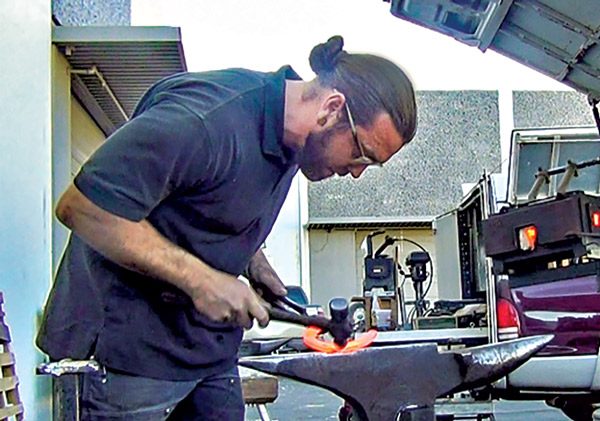When working at the anvil, it’s critical to understand how body position influences every blow of your hammer.
Sacramento, Calif., farrier John Williams suggests assuming a working triangle position with your feet shoulder-width apart and even with one another, while your knees are slightly bent and relaxed.
“One side of my body is a working triangle, my tongs are another and my hammer is the third,” explains the Pacific Coast Horseshoeing School forging instructor. “It’s always staying with that same body positioning.”
It’s critical to keep your arms close to your sides.
“When you bring your arms away from your body, your shoulder comes into play,” Williams says. “Your shoulder is a ball-and-socket joint. You have a lot of movement in that joint.” If you fail to harness that movement, you’re going to experience mixed results at best while forging.”
“That’s where your hammer is going to wander,” Williams says. “If you keep your arms close to your sides, you eliminate all that play that you have in your arms. Your hammer can track much more accurately.”
Read more forging tips from John Williams by reading, “Body Position Is Critical To Better Forging,” in the December 2016 issue of American Farriers Journal.







